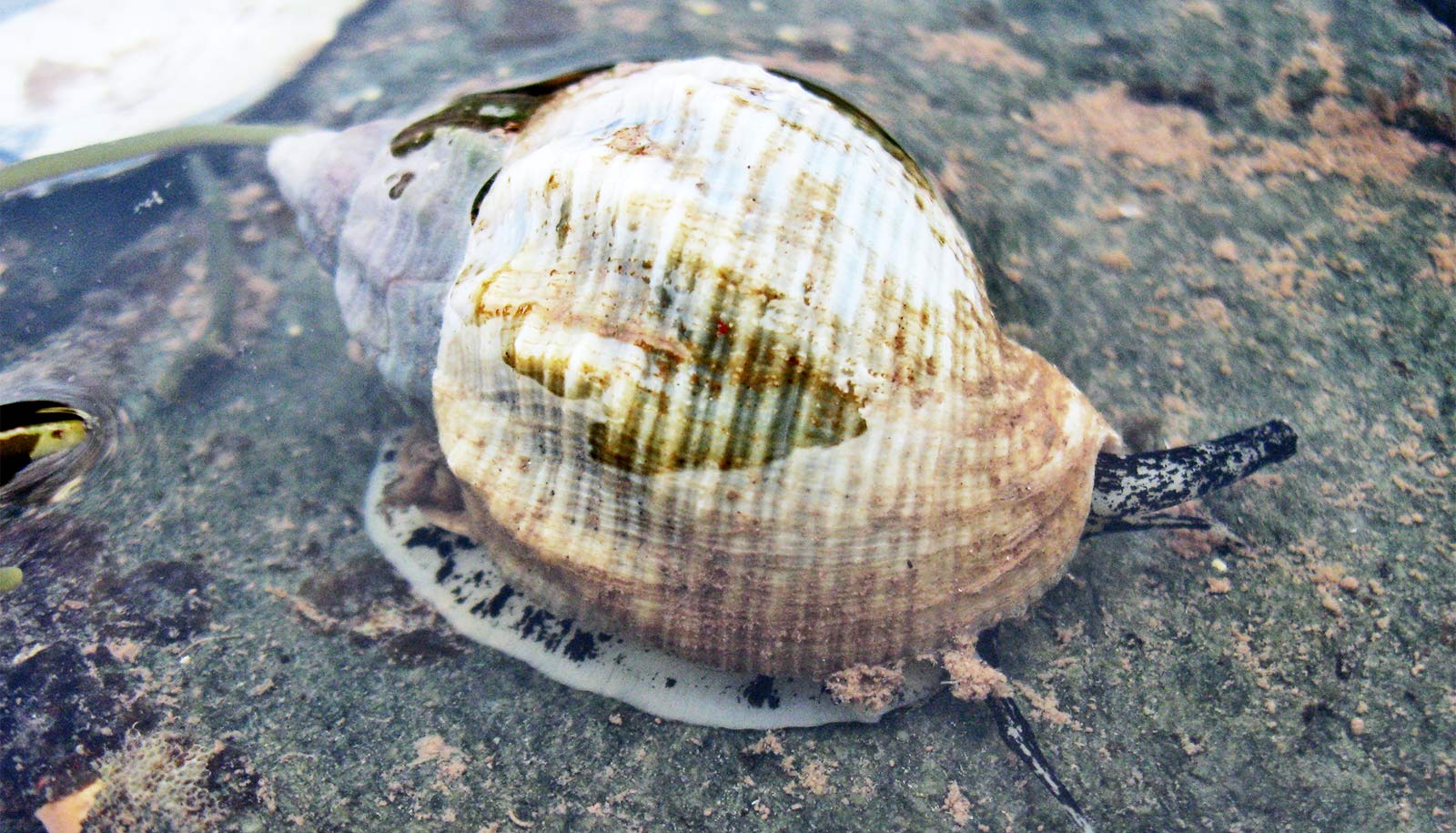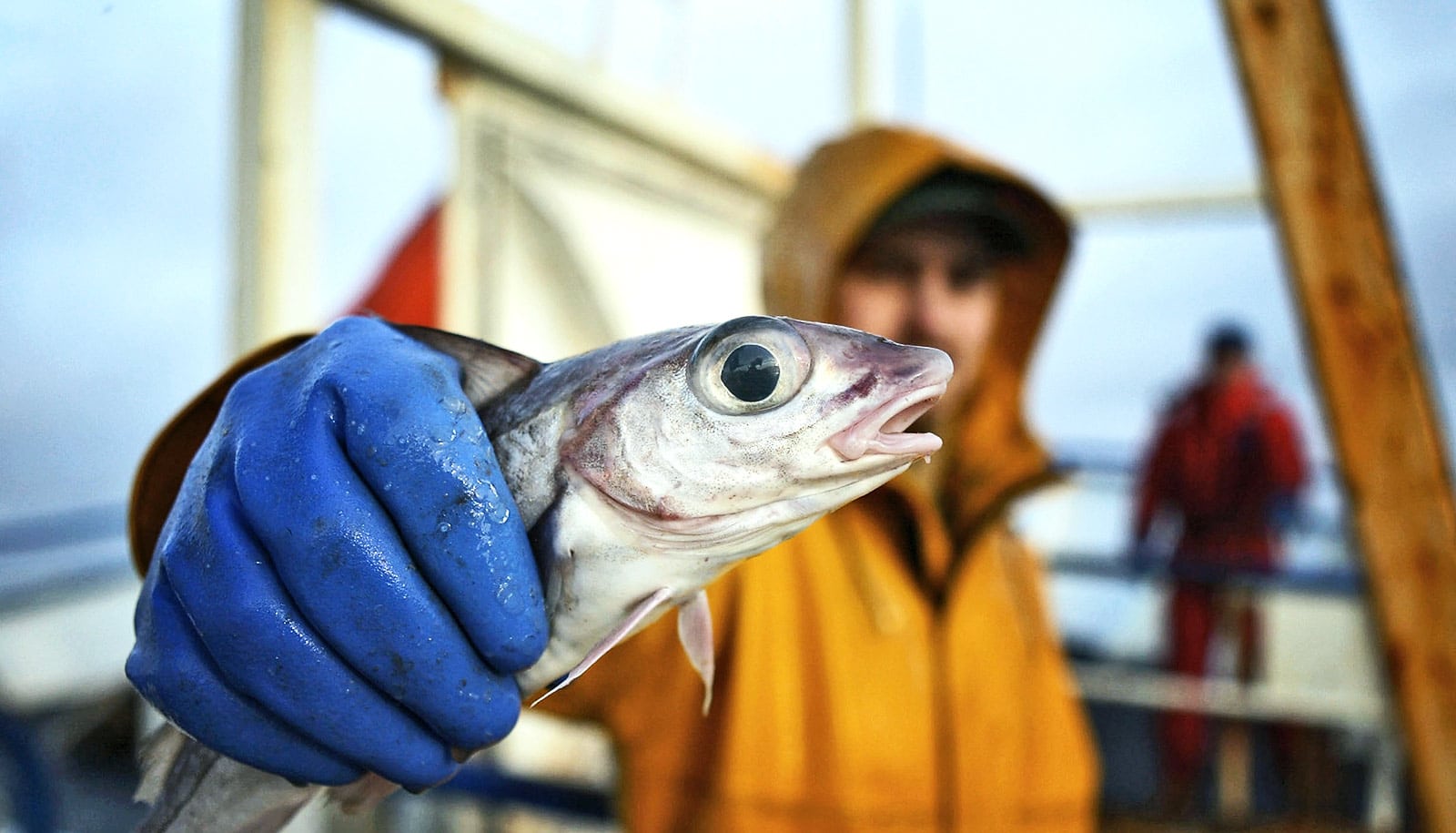Climate change could threaten the survival and development of the common whelk, a type of sea snail living in the mid-Atlantic region, researchers report.
Fishers have harvested the common, or waved, whelk (Buccinum undatum), an important commercial species, for decades in Europe and Canada for bait and human consumption.
Its habitat within the mid-Atlantic region is one of the Earth’s fastest warming marine areas. Annual fluctuations in the bottom temperature are among the most extreme on the planet due to unique oceanographic conditions.
Climate change will result in higher temperatures—and that’s a problem because temperatures closely link to the whelk’s spawning cycle and increases could threaten its survival.
The study marks the first time researchers have documented the species’ annual reproductive cycle in the mid-Atlantic.
“Previous studies showed that the common whelk, a cold-water species, has some resilience to warmer temperatures,” says lead author Sarah Borsetti, a doctoral student at Rutgers University’s Haskin Shellfish Research Laboratory in the School of Environmental and Biological Sciences.
“But rising temperatures may have a negative impact on whelk survival, recruitment, development, and growth.”
Commercial fishers are interested in developing a fishery for this species in the mid-Atlantic. Similar to the United States, whelk fisheries have expanded in many countries, resulting in a global increase in whelk landings over the last 20 years.
But whelk have highly variable traits, such as reproductive timing, that need to be studied before intense fishing begins, Borsetti says. The species is vulnerable to overexploitation if fishery managers assume populations are uniform throughout its habitat.
“The resilience of whelk comes with a trade-off: fewer offspring, which can negatively impact the whelk population and fisheries landings,” says coauthor Daphne Munroe, an associate professor in the marine and coastal sciences department, who is based at the Haskin Shellfish Research Laboratory in Port Norris, New Jersey.
Previous research examined traits such as the size whelk reach in maturity, sex ratio, and abundance. For the study on whelk reproduction, the team caught 602 whelk off the coast from Cape May County to the Delmarva Peninsula from January 2017 to September 2017. The study examined fluctuations in whelk body metrics, gonad weights, and sea-bottom temperatures.
The paper appears in the journal Helgoland Marine Research. Additional researchers are from the Virginia Institute of Marine Science and the National Oceanic and Atmospheric Administration’s Northeast Fisheries Science Center.
Source: Rutgers University


